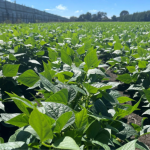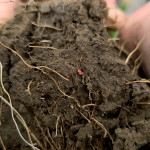Regenerative Farming Shows Major Gains in Soil Health Across the USA
Added 5 months ago
New Research Shows Soil Benefits Begin Within Just Two Years of Transition
A groundbreaking 2024 study led by Dr. Ylva Lekberg reveals that switching from conventional to regenerative agriculture can rapidly and significantly improve soil health — regardless of crop type or geography.
The research, which surveyed 57 farms across 18 U.S. states, found that farms using regenerative practices had, on average, 21% higher soil carbon and 31% more microbial biomass than their conventional counterparts. These changes were evident even in farms that had adopted regenerative methods for only two years.
“These findings challenge the common notion that meaningful improvements in soil health take decades,” said Dr. Lekberg. “With regenerative practices, benefits to the soil can be both substantial and swift.”
Key practices included no-till farming, cover cropping, reduced synthetic inputs, and livestock integration. Notably, increased soil carbon and microbial activity were consistently observed across various crops — from corn and soy to vegetables and fruits.
With growing global interest in carbon sequestration and sustainable agriculture, this study strengthens the case for regenerative farming as a viable, science-backed solution.
Join the conversation
Be the first to leave a comment.
Leave a comment
All comments are reviewed before they are published on the website. Your email address will not be published.



Community Engagement and Knowledge Sharing Strengthen the Carbon Positive Project


Farewell to Trustee Phil Schofield – A Foundational Leader of the HBFFCT

